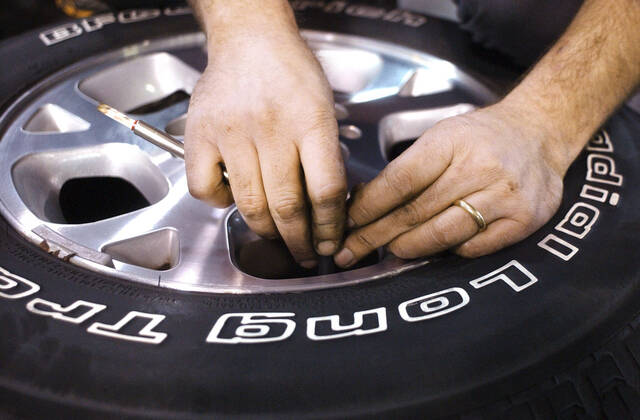Cold weather can deflate your tires. Here's how to stay safe
Falling temperatures mean falling tire pressure, too.
For many parts of the country, the average date of the first fall frost has passed, and the chill of autumn nights has already crept in, according to the Old Farmer’s Almanac.
As temperatures fall, tire pressure can decrease one to two pounds per square inch for every 10-degree decrease, according to the American Automobile Association.
“This is simply due to how air molecules react to variance in temperature,” American Automobile Association (AAA) senior automotive manager David Bennett said. “Air molecules do not move as rapidly in colder weather causing air pressure to drop.”
Under-inflated tires can contribute to an increased stopping distance, decreased grip on the road and poorer gas mileage, Bennett said.
How to check your tires
AAA recommends checking tire pressure with a tire gauge.
As gas stations can offer air pumps, AAA warned that those pressure gauges could be damaged due to weather exposure or overuse.
Additionally, drivers are advised to check tire pressure after tires have cooled, typically three hours after driving, then remove the valve stem cap and press the gauge to the system.
There are three types of pressure gauges, according to AAA:
Stick pressure gauge: Approximately the size of a pencil, this gauge fashions a rod that slides out of the valve when you press the gauge to the system. It’s relatively inexpensive and easy to store in your glove box, but can be difficult to read.
Dial pressure gauge: Used the same way as the stick pressure gauge, but more expensive and harder to store in your vehicle. Resembling a blood pressure cuff, the dial pressure is easier to read than the stick pressure gauge.
Digital pressure gauge: The most accurate of the three. The dial pressure gauge sports an electronic screen instead of the stick or dial.
Checking tire pressure without a gauge
In situations without a tire pressure gauge, there’s a few things you can do to identify underinflated tires.
Examine the wheels: Tires will sag where the rubber meets the road.
Feel the wheels: If the tire gives when you press on it, it most likely has low pressure.
Load weight into the vehicle: If the tire appears to flatten when more weight is added to the car, the tire could be underinflated.
Handling changes: If your vehicle does not drive as smoothly or is bumpier than usual, making steering noises or having difficulty turning, your tire pressure may be low.
The most accurate way to check your tire pressure without a tire gauge is to take the vehicle to a mechanic.
Tire pressure can be adjusted at home with an air pump or air compressor. Additionally, drivers can refill their tires at gas stations with air service for a small fee.
Remove the ads from your TribLIVE reading experience but still support the journalists who create the content with TribLIVE Ad-Free.

